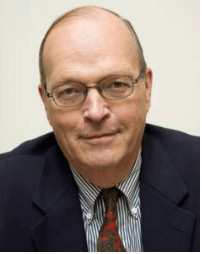
Before discussing Esalen's work in uniting the Abrahamic family, allow me to set the context by sharing the story of Esalen's first venture into citizen diplomacy. In the fall of 1980, I first came to Esalen for a weeklong workshop to brainstorm on the problems and threats in the U.S.-Soviet relationship.
At that time our governments were dangerously estranged. The Russians had invaded Afghanistan the year before, in 1979, and installed a “puppet” prime minister after some Soviet aid workers were murdered by Afghans.
President Jimmy Carter was unable to put an end to the invasion. The main course of action was to cut off cultural exchanges and other communication between Washington and Moscow.
The State Department, where I worked, set up a committee to persuade countries to boycott the 1980 summer Olympics in Moscow. I called it the Committee to Kill the Moscow Olympics.
So there we were, thousands of multi-warhead nuclear ICBMs aimed at each other, and the two countries weren’t communicating. Truly a recipe for disaster. Esalen co-founder Michael Murphy, Dulce Murphy, and close colleagues had visited the Soviet Union to meet people interested in higher forms of human creativity and physical performance.
But they, like the rest of us, had contracted the “fear of frying” that was widespread in both the U.S, and the U.S.S.R. at the time.
Back at Esalen, they assembled a group of more than 40 people from across the country to discuss the U.S./U.S.S.R. situation. At the workshop, we were all asked on short notice to say why we had come to Esalen.
I sometimes joke that the Angel Gabriel inspired me to say, since I was an active duty Foreign Service officer, “I suppose you could say that what I do is track one diplomacy, and what you [the Murphys, et al] do could be called track two diplomacy.”
This simple formulation described unofficial, informal interaction between representatives of groups or nations in conflict—interactions that were designed to establish trust and partnerships for creative thinking to help our peoples transform their tense relationships into something more relaxed and oriented toward problem-solving.
As a result of this visit, Michael invited me to organize an annual workshop at Esalen on the psychology of the U.S.-Soviet relationship. It was obvious to me that as an unknown mid-level career diplomat from Washington, I could not attract the caliber of experts that our task required.
We needed experts on the Soviet Union and the United States, as well as renowned political psychologists, to do the deep historical and psychological analysis required.
By great good luck, the Murphys were friends of Erik and Joan Erikson. Erik was my intellectual hero and teacher through his transformational works Childhood and Society, and Identity, Youth, and Crisis. Dulce gave me their phone number.
I’ll never forget how nervous I was, with talking points drawn up, when I made the call from Washington to California. It might be an exaggeration to say it was like dialing up God, but not far from it.
That call turned out to be the first contact in what came to be a deeply personal and loving relationship. Erik was as gentle and modest as one could be, and very eager to be part of the learning experience to uncover the roots of the pathology in the nuclear weaponized U.S-Soviet engagement. His wife, Joan, was a spiritually and emotionally nourishing fountain for Erik and all of us in the four workshops we held in as many years.
At Esalen, we did psychodynamic political psychology not only of Russian and Soviet history and behavior, but also of our own. We were two superpowers playing a dangerous game called M.A.D.—mutually assured destruction—with the rest of the world thrown in.
But by the end of the decade, after Gorbachev’s Perestroika (restructuring), tensions were largely defused. We have good reason to believe that Esalen’s work in citizen diplomacy, which included hosting Boris Yeltsin’s first trip to the U.S., played a significant role in that historic shift.
After 9/11, Esalen adopted the same methods used in the U.S.-Soviet-American project. We organized separate workshops on Muslim, Christian, and Jewish fundamentalisms. We began by exploring the history of each religion to distinguish between the pro-social values of each tradition as taught by their prophets, and the violent pathologies manifested by their extremists. Here is a standout example from one of the workshops.
At the Muslim fundamentalism meeting in September 2005, Lawrence Wright—an old friend of Esalen’s and mine, as well as a staff writer for The New Yorker—shared a portion of a book he was writing.
The book described the early life experiences of Sayyid Qutb, an Egyptian member of the Muslim Brotherhood who was imprisoned in Cairo after an assassination attempt against Gamal Abdel Nasser by another Muslim Brother in 1954. Qutb was tortured in prison and consequently developed a rage-propelled, militant version of Islam.
Qutb’s writings came to be the basis for Osama Bin Laden’s ideology of relentless violence against Muslim governments and also against the West, including the U.S., the U.K., and Spain. Wright’s draft became The Looming Tower: Al-Qaeda and the Road to 9/11, and won the Pulitzer Prize for General Non-Fiction in 2007. We were extremely proud of him.
In 2007, Esalen held a strategic planning workshop that led to the establishment of the Abrahamic Family Reunion project. Our goal, first and foremost, was to learn what the representatives of Jewish, Christian, and Muslim religions needed to hear to begin to believe in the possibility of an Abrahamic reunion based on trust and mutual acceptance. To do that required walking through much of the history of the three faiths’ traditions.
Our purpose was not to identify villains, but rather to pinpoint those behaviors and historical events that set each tradition against the other two; to understand the underlying causes of the antagonism and brutality that resulted from these behaviors and events; and to address those causes therapeutically so that we could begin to heal our relationships. We needed to be as honest with each other as possible, eliciting through dialogue an agenda for healing by means of a frank presentation of grievances.
An outstanding example of the intensity of honesty came from Marc Gopin, a professor at George Mason University. Speaking as a rabbi to help people understand the Jewish people, Gopin described the consequences of consistent persecution and oppression by Christianity.
One of the challenges of being an extremely small percentage of the planet’s population, Gopin said, is the very strong sense of impotence and powerlessness. Beneath this sense is a resentment that, having been around for three to four thousand years, by any reasonable calculation the Jewish population today should be close to 100 million. And the main reason the Jewish population is so small—less than 14 million worldwide—is slaughter, periodic and regular.
With so few Jewish people in an exploding world population, one question becomes very real: How are we going to survive? Part of what this group needs is a sense of acknowledgement, respect, and gratitude for what Judaism has provided. A certain part of this story is mediated by the important concept of a chosen people, that one child is favored above all others—a concept that is an endemic problem specifically for the Abrahamic family of religions. All three religions should try to abandon this concept or somehow mediate it differently.
At another level, what many Jewish people need to hear from Christians and Muslims is that Jewish children won’t burn in ovens anymore, that no one will lust after blowing up Jewish communities, that a Jewish life is worth as much as a Christian or a Muslim life.
The Muslims in the meeting asked that they be seen by Jews and Christians as equals in the family of Abraham, sharing the same God. And that they be respected. The Christians enjoyed an asymmetry of power in the triangular relationship, with a documented record of oppression of both Jews and Muslims. They came to realize that their task was to acknowledge and atone for this history.
In the five articles that follow, one may see real progress in a sense of sibling connection among the Jews, Christians, and Muslims in what has expanded from the Abrahamic Family Reunion project to the International Abrahamic Network. All but one of the authors participated in the April 2013 workshop in Big Sur (and he, Marc Gopin, is a veteran of previous Esalen workshops).
A small group of us plans to travel to Jerusalem next spring to learn from Israelis and Palestinians what they need to hear from the other to believe that real peace is possible.
And with appropriate modesty, we will offer the insights from our experiences in intensive workshops at Esalen. We will engage with our hosts on the creative potential of mass media—including documentaries, feature films, television, and especially social media—to enhance the environment in public opinion to assist the formal peace negotiations. We will also build on the growing impact of historical tourism in Israel and Palestine to promote the values of the Abrahamic family.
